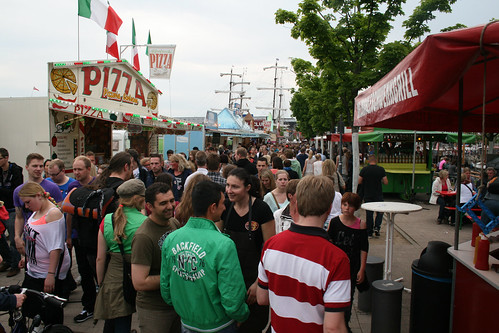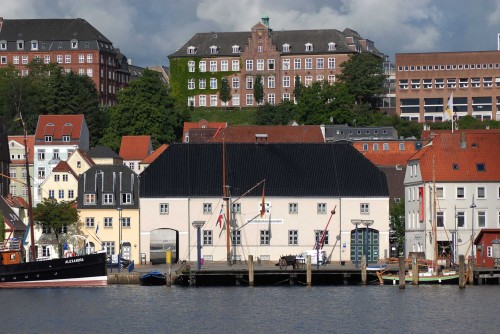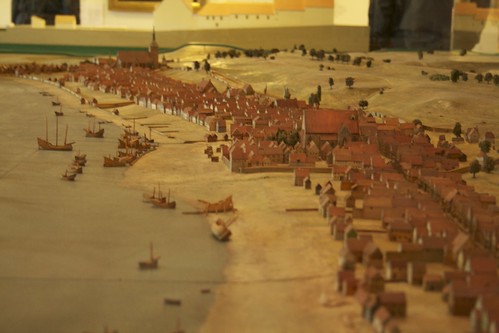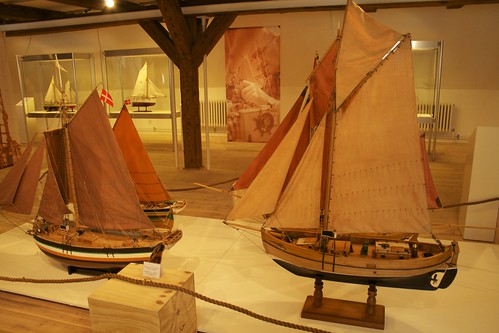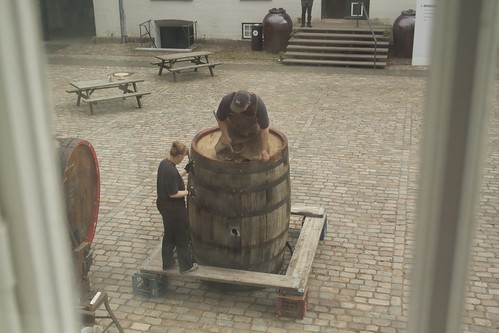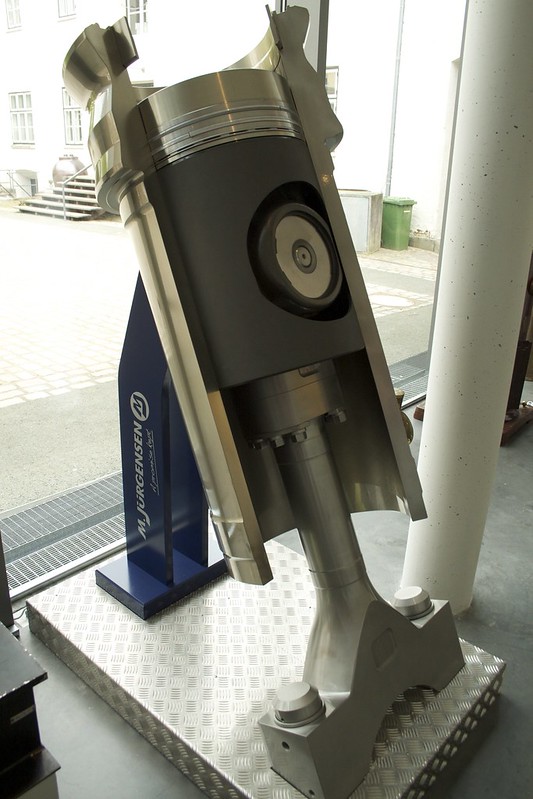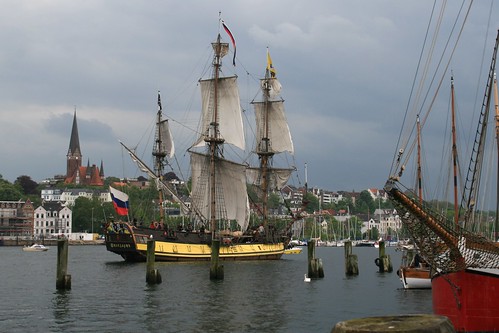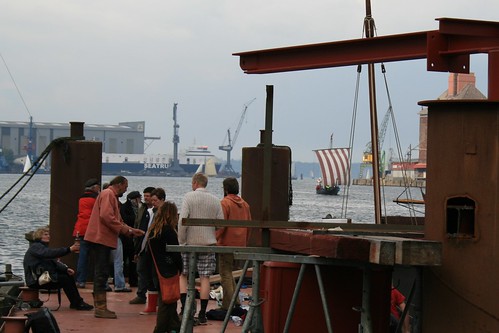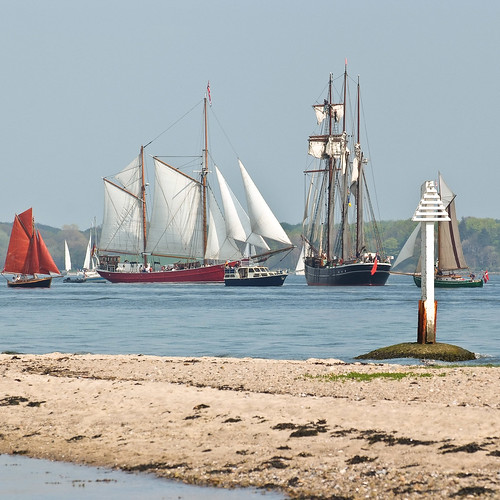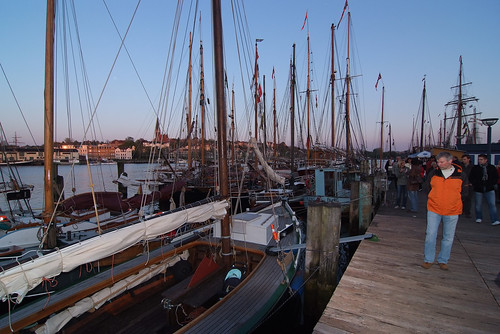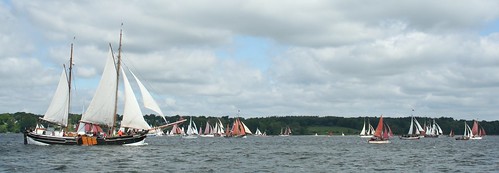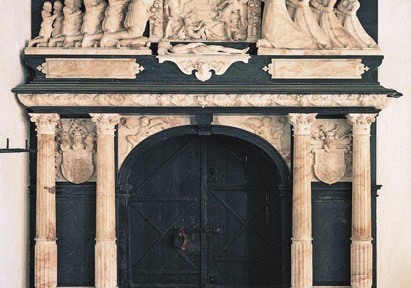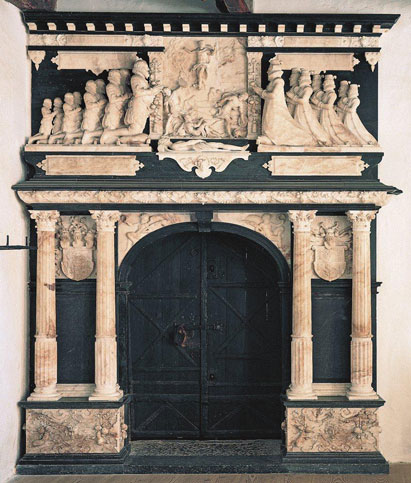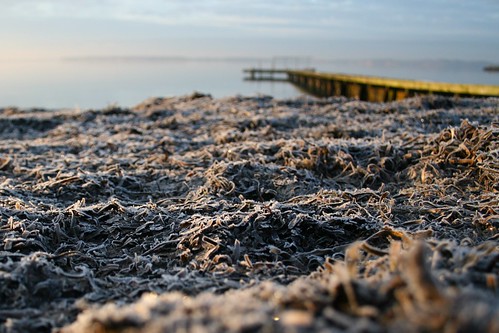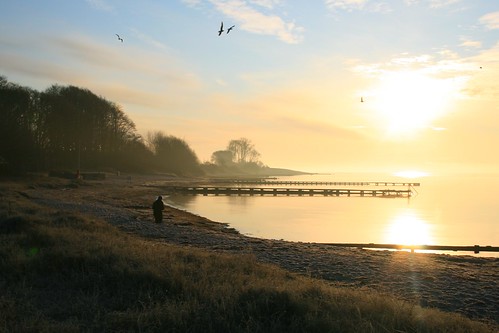Kieler Woche, or Kiel week, is the largest sailing event in the world combined with one of the largest town festivals in Germany, attracting over 3 million people every year. Events are organised all along Kiel Fjord, with most of the cultural programme focussed on the inner parts of the Fjord and the sailing events focussed around the Olympic harbour (Schilksee).
Every year Kieler Woche falls on the last week of June, with the events starting on Saturday 22nd June and ending with a fireworks display on Sunday 30th June this year (2013). We made it down there on the opening Saturday to get my first ever taste of Kiel.
Getting There
Driving from Sonderborg to Kiel takes around 1.5hrs. However, Kiel week is particularly crazy, with parking being a big issue. For a more relaxing arrival and departure, leave your car in Flensburg and take the train from Flensburg directly to Kiel. There are trains every hour during the day, and running into the night (extra trains are organised at night on this route during Kiel week). If you are 2-5 people in the group, a Schleswig Holstein group ticket is your cheapest offer.
Getting around
An issue with Kiel week is that the events are spread all over the Fjord. Good walking shoes are a must, but even those will not be enough to get you from the central harbour area to Schilksee for the races. There are two options here: buses (if you have a Schlewsig Holstein ticket you can take a bus from the train station to there for free) or the more scenic option, a ferry. Buses 501 and 502 run from the train station (bus stop A1) to Schilksee every half an hour (3 €) and takes around 45 minutes. The ferry (4€) takes around 1.5 hrs but is a good way of resting your legs on the way back after a day of walking.
What to do
Where do we start? There is plenty to do, and having been there only once we don’t dare to even think that we figured out half of what is going on. However, a good plan if this is your first time is to arrive at the train station and have a walk around the harbour area. This area is mainly full with food stalls. From there, walk along the water to the Kiellinie (harbour promenade), where there is more food, fair ground areas, but also other stalls e.g. by the University of Kiel.
At the end of Kiellinie your main next destination is Schilksee to see some races. We took a bus back to the train station, where we grabbed some lunch and jumped on a bus to Schilksee. This is probably not the best option. We later discovered the ferry: so what you can do is either back track a bit to Reventlou bridge or walk a bit further to Bellevue bridge and take the ferry from there to Schilksee.
Schilksee is the area where most of the sailors are located. It is nowhere near as busy as the inner harbour area. There is also a beach right next to it if a swim is what you are looking for. Having enjoyed Schilksee you can then take the boat or bus back to town, where you can grab some dinner and enjoy the atmosphere.
To know what is going on in Kiel, you can also download the Kieler Woche app to be able to quickly look through events.
When to go
Kieler Woche, as the name implies, is on all week. However, the weekends are the busiest so if you’re going for the atmosphere that is your best bet. We also arrived in Kiel around 10:30 am (it should have rained later and wanted to get in as much as possible before it arrived). In the circumstances, the rain didn’t arrive, so 10:30 was a bit early. Arriving around 11-11:30 is probably a good idea, especially if you want to enjoy the night life of the place.
If you want more information, a good website we found for planning our trip was this one.

